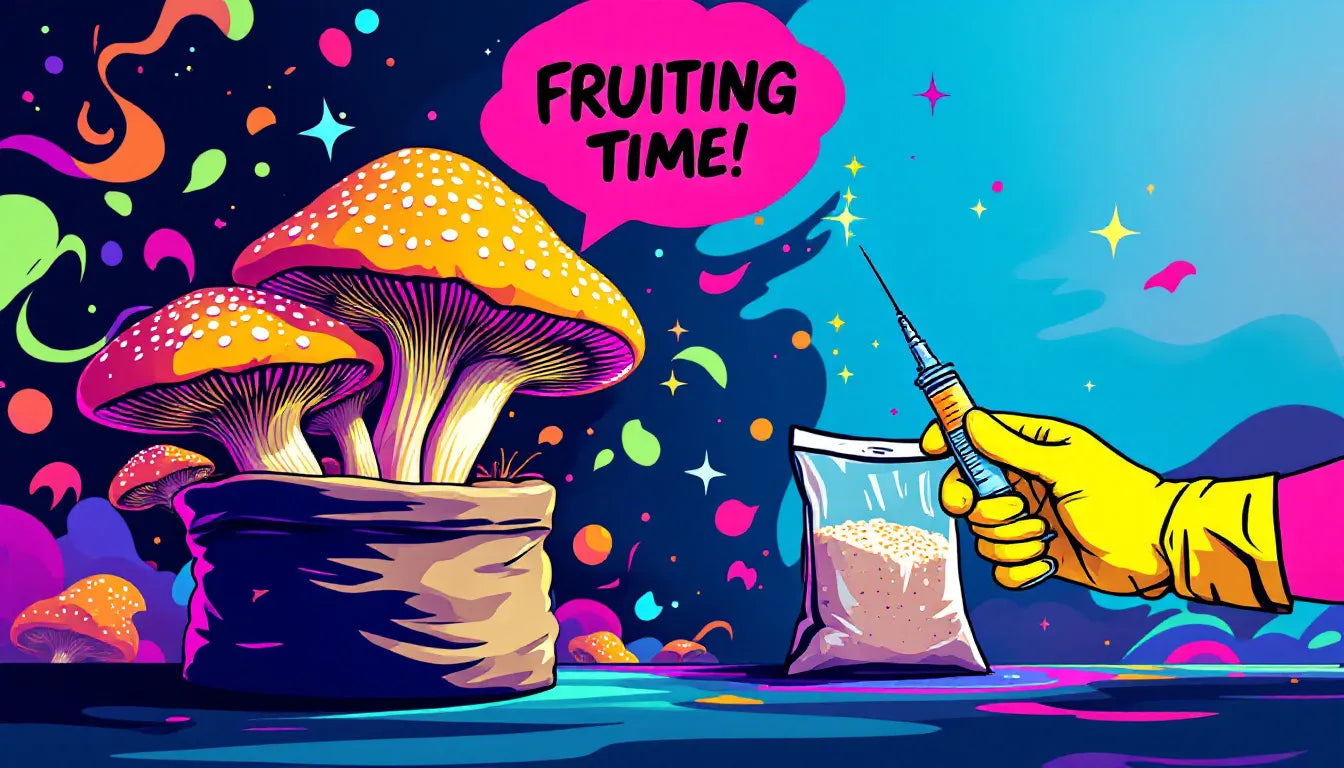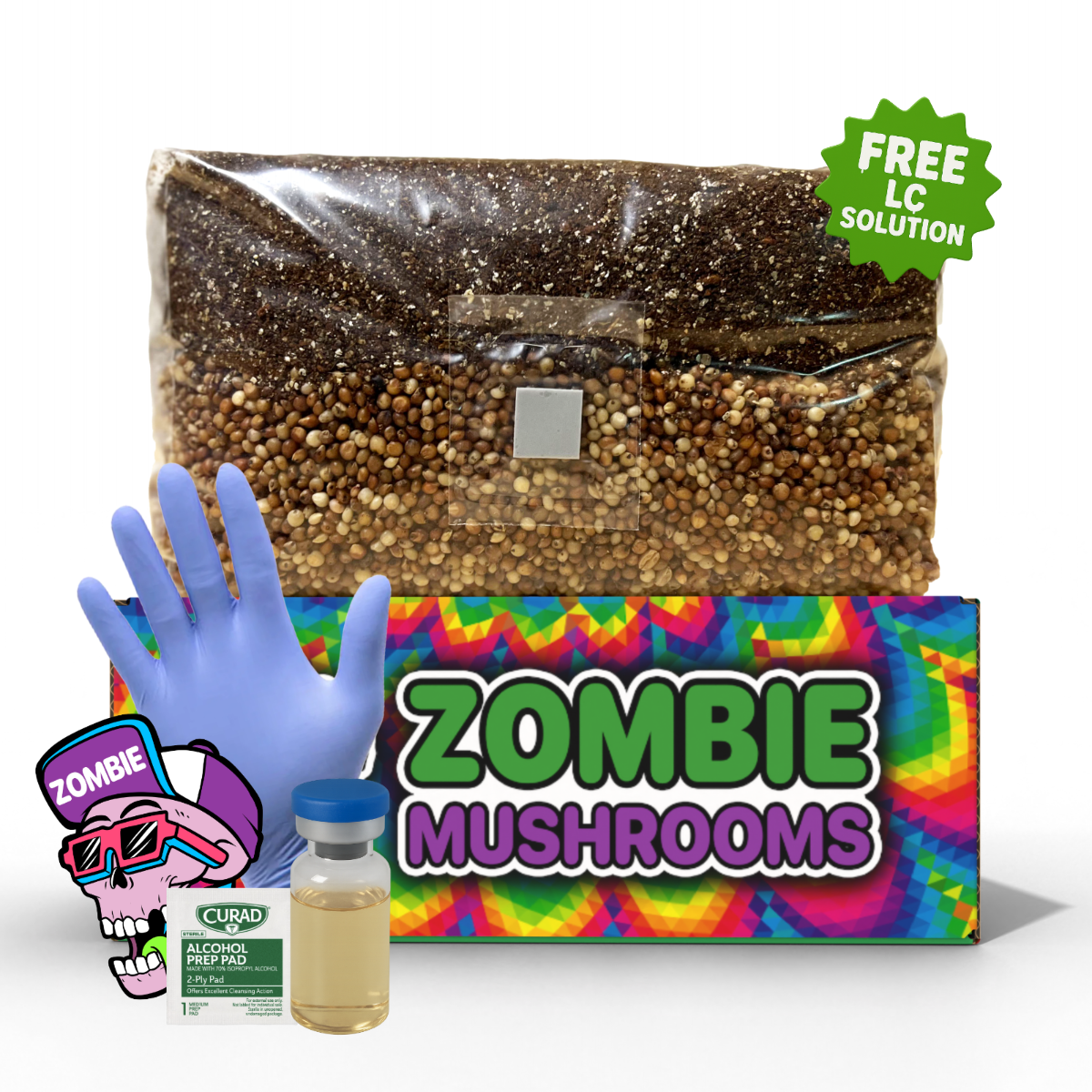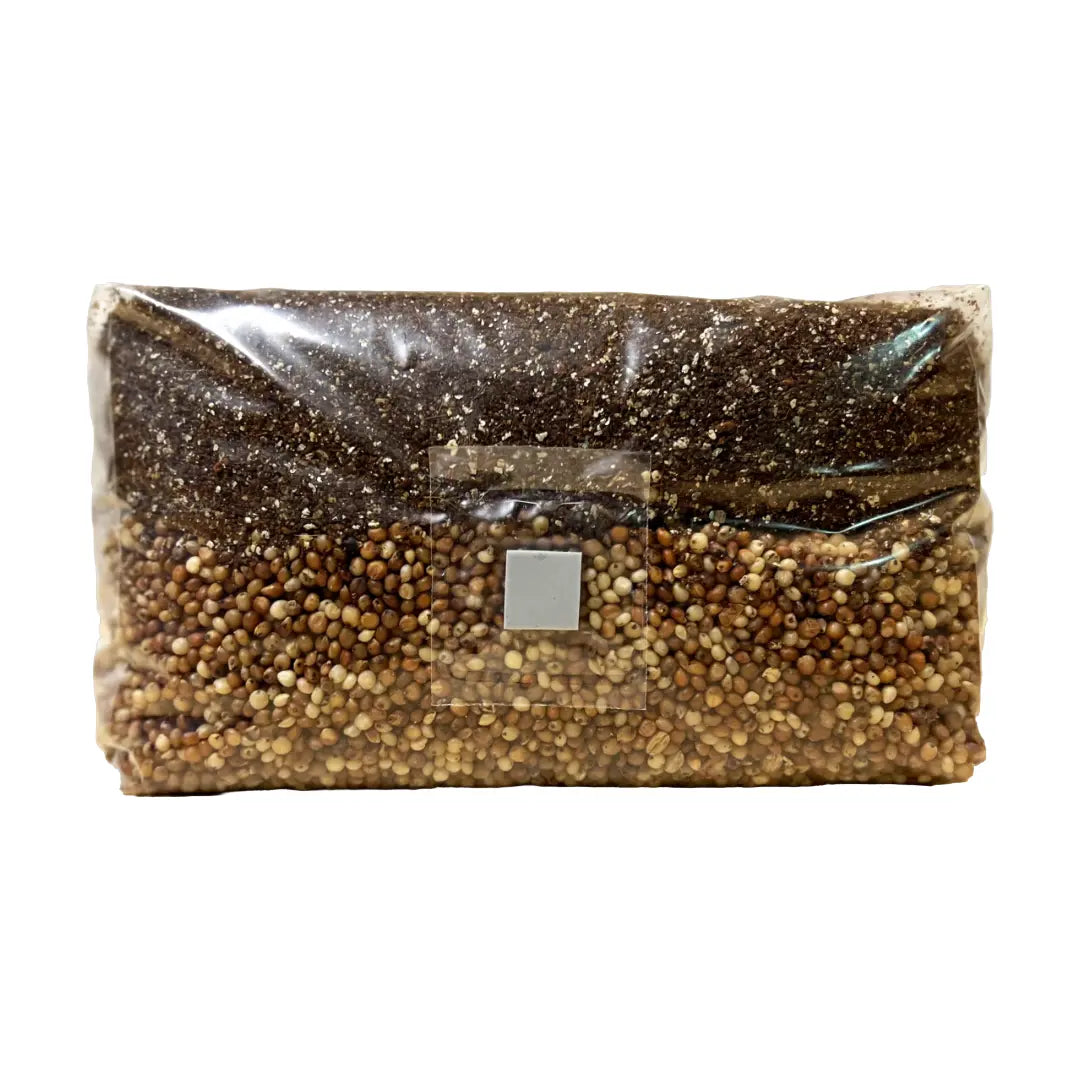⬇️ Prefer to listen instead? ⬇️
- Chestnut mushrooms do well in cool, moist, and dim places like decayed wood.
- Science shows they have compounds that boost immunity and fight microbes.
- You can grow them inside or outside using sawdust or hardwood logs.
- They look like toxic mushrooms like Galerina marginata, so it's key to know what you're doing.
- You can get up to three harvests from each grow bag if you take care of it.
Chestnut mushrooms, also called Pholiota adiposa or cinnamon caps, are a tasty type of mushroom that are golden-brown and have a strong savory flavor. They taste great and are good for both new and experienced mushroom growers. If you set things up right, growing chestnut mushrooms at home can be easy and good for the environment. You can grow them inside with sawdust or outside on hardwood logs.
How to Know Chestnut Mushrooms
Before you start growing chestnut mushrooms, you need to be able to tell them apart from mushrooms that look similar. Chestnut mushrooms grow in groups on hardwood and have some things that make them easy to spot
- Cap: The cap is 2–10 cm wide. It starts rounded and gets flatter as it grows. It's yellow to chestnut-brown and has dark spots that look like scales. It gets a little slimy when it's wet.
- Gills: When they are young, the gills are pale yellow. As they get older, they turn rusty brown. They are packed close together.
- Stem: The stems are firm and round, 2–8 cm long, and often grow joined at the bottom. The stem is pale yellow with brown spots that look like scales.
- Spore Print: This is a sure way to know what they are. Chestnut mushrooms drop rusty brown spores.
- Taste/Texture: They taste a little nutty and are pleasantly crunchy when cooked. They are good in many dishes like stir-fries, grilled dishes, and soups.
Danger Alert: Chestnut mushrooms look a lot like the deadly Galerina marginata, which also grows on wood. Galerina mushrooms have poisons that can cause serious liver damage and even death. So, if you are not sure, never pick wild chestnut mushrooms. Only use mushroom starter from trusted sellers when you grow your own.

Where They Grow Naturally and What They Need
In nature, chestnut mushrooms are saprophytic. This means they eat dead plant stuff, mostly dead hardwood trees like oak, maple, and beech.
Best Growing Conditions
To copy a forest floor and help them grow best
-
Temperature Range:
- For mycelium to grow: 68–75°F (20–24°C)
- For mushrooms to grow: 55–70°F (13–21°C). Often, a drop in temperature will start the mushrooms growing.
- Relative Humidity: 85–95% is best, mostly when mushrooms are growing.
- Light: Soft, not direct light, for about 12 hours a day. Don't put them in direct sunlight because it can dry out the growing mix.
- Substrate Type: Hardwood sawdust is the best growing mix, but logs and straw with added nutrients can also work, depending on how you grow them.
Knowing what they need helps you set up your growing area, whether you are making a mushroom grow room inside or putting mushroom starter into logs outside.

Things You Need to Grow Chestnut Mushrooms Indoors
To set up an indoor space to grow chestnut mushrooms, you need both living things and equipment. Here’s a list of what you'll need
Living Materials
-
Spawn or Liquid Culture: This is like your mushroom seed. You can buy chestnut mushroom grain spawn or liquid culture online from places you can trust
-
Sterilized Substrate Mixture: The best mix for growing is
- 78% hardwood sawdust (oak, beech pellets are good)
- 20% wheat bran (adds nitrogen to help the mycelium spread faster)
- 1% gypsum (helps keep the PH right)
- 1% sugar (glucose/dextrose is a carbohydrate for food)
Tools and Equipment
- Grow Bags: Plastic grow bags with tiny filters let air in but keep bad things out.
-
Sterilization Equipment:
- Pressure cooker (at least 15 PSI) to sterilize for 2.5 hours
- Or, big pots for pasteurization (mostly for outdoor growing)
- Clean Gear: Disposable gloves, 70% rubbing alcohol, a small flame or knife, and a clean place to work (glovebox or flow hood)
- Environment Tools: Digital thermometers, hygrometers, spray bottles for misting, and a light with a timer.
Once you have your tools, the next thing is to get your growing mix ready and get set to add the mushroom starter.

Getting the Growing Mix Ready: The Key to Success
A growing mix that has lots of food and is clean is very important when you grow chestnut mushrooms. Follow these steps to get it ready
Mixing & Getting the Right Moisture
- Mix sawdust, bran, gypsum, and sugar well.
- Slowly add water and mix until it’s 60–65% moisture. It’s right when you can squeeze a handful into a ball and it stays together but doesn’t drip. If it falls apart, it’s too dry. If it drips, it’s too wet.
Filling Bags and Sterilizing
- Put the mix into grow bags, filling them about 2/3 full. Close them with a heat sealer or twist ties.
- For the best sterilization
- Pressure cooker: Heat bags at 15 PSI for 2.5 hours.
- Or pasteurization: Steam for 2–4 hours (not as good as sterilization, only use if you can’t sterilize).
- Let the bags cool completely before you go on. Hot mix will kill your mushroom starter.

Adding Mushroom Starter to the Mix
Adding mushroom starter puts the mushroom culture into the clean growing mix in a clean way to prevent contamination.
Best Ways to Do It
- Clean everything: Wipe down surfaces, clean your tools, and wear gloves.
-
Add Mushroom Starter:
- Shake your liquid culture to mix it up.
- Use a clean needle to put 3–5 ml into the mix.
- Or, put ¼–½ cup of grain spawn on top or mix it into the middle.
-
Close and Mix:
- Close the bag and gently shake or squeeze it to spread the starter around.
- Write the date and mushroom type on it to keep track.
Now you have to wait. It’s time for incubation.

Incubation: Let Nature Do Its Thing
During incubation, the mycelium will grow all through the bag of growing mix. This is like the fungus's roots growing in its new home.
What the Incubation Space Needs
- Temperature: Best is 68–75°F (20–24°C).
- Light: Total dark or just a little bit of light.
- Time: 2–4 weeks. It depends on how strong the starter is and the conditions.
-
Signs of Progress:
- White, fluffy growth that spreads out from where you put the starter.
- When the mycelium covers all the mix, it’s ready to grow mushrooms.
Don’t move them around too much. The bags might puff up because of CO₂—this is normal.

Growing Mushrooms: Time for Mushrooms
Once it’s fully grown, you can get the mushrooms to grow by changing the conditions
Changing to Mushroom Growing
- Cut an “X” or open a corner of the bag to let air in.
- Make it cooler little by little, about 5–10°F, to tell the fungus to make mushrooms.
- Keep the humidity high: Mist or use humidifiers to keep the humidity at 90–95%.
- Add light: Give it 8–12 hours of light a day with soft natural light or LED grow lights (~500-1000 lux).
In a week or two, you’ll see “pins”—small brownish bumps forming where you cut the bag.

Picking Chestnut Mushrooms
Picking them at the right time is important for the best taste and how long they will last.
Best Time to Pick
- Caps are partly open and still curved down a little.
- Gills are showing but not dropping spores.
- Mushrooms feel firm and solid.
Use clean scissors or your hand to twist and gently pull them off at the base. Pick whole groups to avoid leaving bits behind that could get moldy.

Getting More Than One Harvest
Chestnut mushrooms can give you a few harvests from one bag or log.
For the Second and Third Harvests
- Mist every day and keep the conditions right.
- After picking, let the mix rest for 3–5 days before adding more moisture.
- Watch for new pins to grow at the cuts you already made or in new spots.
After the third harvest, the food in the mix is usually used up. You can compost the block or use it as mulch in your garden.

Growing Outdoors: Growing Chestnut Mushrooms on Logs
If you have woods nearby or a shady yard, growing chestnut mushrooms on logs is easy and cheap.
Picking and Getting Logs Ready
- Pick hardwoods: oak, maple, beech are great.
- Logs should be 3-4 feet long and about 4–6 inches wide.
- Let logs sit for 2–4 weeks after cutting (but not longer than 2 months) so other fungi don't grow first.
How to Add Mushroom Starter
- Drill holes in a pattern all over the log.
- Add starter with plug spawn or sawdust spawn using a tool or stick.
- Cover with melted wax to keep moisture in and bugs out.
- Stack them in a shady, moist place—like a stack, leaning against something, or standing up.
You need to be patient. Logs might take 6–12 months to start growing mushrooms. Once they start, they can grow mushrooms for up to 3–4 years.

Good Things About Chestnut Mushrooms for Health
Chestnut mushrooms are healthy and tasty. They have many nutrients and good things in them.
Healthy Parts
- Proteins: Good for vegetarians and vegans.
- B vitamins: Help with energy.
- Dietary Fiber: Good for your gut.
- Antioxidants & Polysaccharides: May help with swelling and the immune system.
What Research Shows
- A study in 2022 found that mushroom polysaccharides help immunity and gut health (Tang et al., 2022).
- A study in 2019 said that things in medicinal mushrooms, including Pholiota mushrooms, fight microbes (Yu et al., 2019).
By growing chestnut mushrooms at home, you get healthy food and things that are good for you.
Last Thoughts: Is It Worth Growing Chestnut Mushrooms?
Yes, definitely. Whether you want to grow them fast and control things inside or grow them easily and naturally on logs outside, growing chestnut mushrooms brings fresh, healthy food right to your kitchen. With a small amount of money, you can get many harvests of tasty, healthy mushrooms—and be happy that you grew them yourself.
Citations
- Tang, B., Zhang, W., Wang, T., & Liu, L. (2022). Polysaccharides from edible mushrooms: A review on their extraction, structure, and bioactivities. International Journal of Biological Macromolecules, 212, 356–366. https://doi.org/10.1016/j.ijbiomac.2022.05.092
- Yu, L., Sun, Z., Wang, W., & Pang, X. (2019). Antimicrobial activity of compounds extracted from medicinal mushrooms: A review. Microorganisms, 7(11), 566. https://doi.org/10.3390/microorganisms7110566



